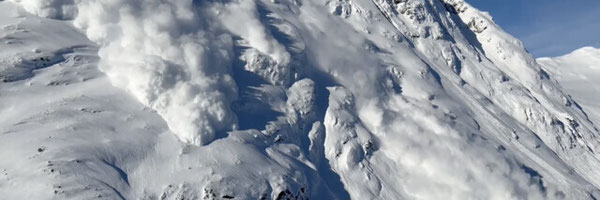Avalanches
Grade 5
Presentation
No video provided
Problem
Problem: How do I know if a mountain face of snow will avalanche?
Not a lot of people know how dangerous avalanches are so if we want to become experts in the topic by learning how avalanches start , we can alert and teach people the dangers of avalanches
Method
we are a Research project so we did not really have a method
Research
The snowpack is what avalanche experts study to indicate if an avalanche will occur
What is avalanche terrain?
Convex Slopes
Cornices
Slab avalanche
Gullie avalanche
What are the conditions that increase avalanche risk?
What are terrain traps? How do I protect myself and my friends in the winter backcountry?
Why do avalanches happen?
Data
When travelling in the backcountry people should look for avalanches that may have happened recently, shooting cracks in the snow or something called whumpfing.
Recent avalanches indicate that the snowpack is unstable.
Shooting cracks while walking or skiing in the snow is a sign of a weak layer under the snow.
Whumpfing is a term used by outdoorsmen that while walking in the snow a sound like “whumpf” also is a sign that a weak layer is under the top layer of the snow.
Research Question:
Science and safety behind avalanches
As you can see in this photo, the little white line on the bottom is the WEAK layer of snow. A weak layer of snow happens when crystals form on the top layer of the snow and a really cold night makes the surface like little marbles. When it snows on top of that weak layer, the new snow if it is heavy enough will crack like the last picture in the photo. This is called an avalanche.
Any area that is larger than 10 m by 10m like the size of a tennis court could have a snow pack that is dangerous to a person.
Most avalanches happen on slopes that are 30-45 degrees, about the steepness of a black diamond run at a ski hill.
In this photo, the person is using an inclinometer which is an instrument that measure the slope to ground. Most avalanches happen at a 30-45 degree angle.
Convex Slopes
Convex roles on a slope are trigger points—places where avalanches
are likely to start. You can also be at risk when you are
directly under these convex rolls.
Cornices
A cornice avalanche happens when wind hits the top of the
mountain and makes a big snow wave. Then pressure
pushes the cornice and then makes it break and turns
into an avalanche. When falling it may trigger avalanches
and can be very dangerous if you are below it.
Slab avalanche
For a slab avalanche to occur, the slab needs to be more sticky than the weak layer and have sufficient tensile strength to help drive a fracture across the slope.
Imagine stacking a textbook on a layer of potato chips, that is the weak layer cracking.
Gullie avalanche
Some avalanche paths run through narrow gullies.
Heavy Snowfall
- If 30 cm of snowfall over 48 hours then avalanche risk increases.
Wind
- If there is a consistent wind then the wind can take snow and move it to other slopes which creates a heavy load that could avalanche. Lines on the snow like the picture indicate that.
Warming
- If the temperature rises a lot or rain
occurs the slopes could avalanche
more.
Terrain traps are features that increase the consequences of being caught in an avalanche. Terrain traps that increase the risk of injury include trees, rocks, cliffs, and open water. Terrain traps that increase burial depth include gullies, flat sections, and crevasses.
Learn as much as you can about avalanche terrain and safety.
Check the bulletins
Avalanche Canada creates avalanche bulletins that tells backcountry users the snow conditions. This is the first step in any trip planning when adventuring in the mountains.
Take an avalanche course.
Conclusion
Are conclusion for the safety behind avalanches is…
Safety: For safety we can get people to take avalanche course, research in avalanche conditions and have the right gear like transmitter, avalanche shovel and if you want to have it a parachute backpack.
Citations
https://www.getprepared.gc.ca/cnt/hzd/vlchs-en.aspx
Avalanches By Stephen kramer
Acknowledgement
Lisa Macauley Eriks mom Erika Crowther Hanks mom Ryan Macauley Eriks dad Matt crowther Hank dad

